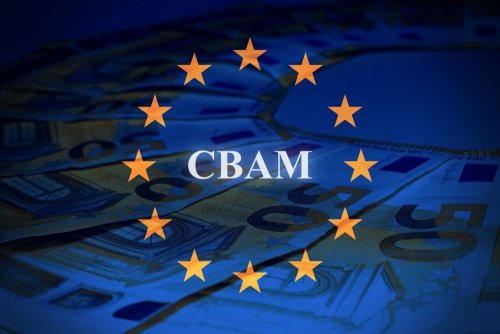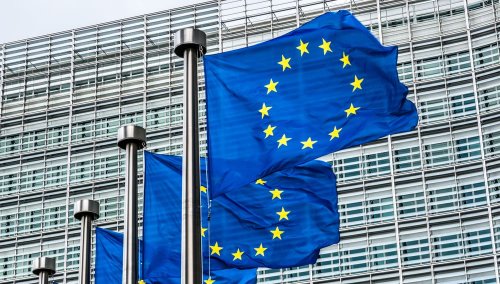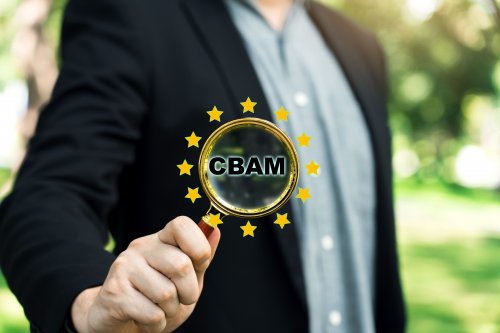In the first year of Fit for 55, the EU has made progress on the Carbon Border Adjustment Mechanism (CBAM), and the energy crisis and war in Ukraine have catalyzed environmental change.
However, there are still no clear agreements on the phasing out of free carbon quotas in the EU Emissions Trading Scheme (ETS), according to Sustainability
The article noted that European politicians' concerns about putting carbon measures in the background due to new challenges have so far proved to be unfounded, and legislative procedures are still in place and on time.
In the Fit for 55 package, the European Commission (EC) has proposed detailed legislative steps to be taken to reach the first milestone towards its zero target by 2050 - a net reduction in greenhouse gas emissions of at least 55% by 2030 from 1990 levels. x years.
The EC's proposals were only the first step in a long process - within the European Union's legal framework, the EC's role is to make legislative proposals and implement laws, but not to draft or adopt laws on its own.
When the Fit for 55 package was launched, it was expected that the proposals would be introduced by law by the end of 2022.
However, the sharp rise in energy prices since mid-2021 has led to an acceleration of consumer price inflation, which has not been observed since the 1970s. Also, the Russian invasion of Ukraine in February 2022, among other things, undermined the world economy, energy and raw materials markets.
“Rapidly rising energy prices have affected living standards and worsened economic prospects. Politicians in most EU countries have been concerned about the social consequences and implemented measures to protect households from influence, ”the report said.
In addition, a number of EU governments have openly questioned the functioning of the ETS, Europe's leading policy on climate change, arguing that it is further raising energy prices. So the price of carbon quotas in the EU ETS has risen from ~ € 20 per tonne of CO2 in early 2021 to ~ € 90 at the end of the year, which contributed to the growth of industrial production costs.
There were concerns that such negative factors would reduce environmental ambitions to keep energy prices low, such as suspending the ETS or boosting domestic coal production.
However, energy security issues are stimulating the fastest transition from fossil fuels to renewables.
In its RePowerEU initiative, the EU has made it clear that a rapid transition to RES will play a key role in reducing dependence on Russian energy imports. The EU is currently considering whether it is possible to increase the share of renewable energy sources in final energy consumption to 45% by 2030, above the 40% proposed in December 2021 in the revised Renewable Energy Directive, "- said in a statement.
To achieve this new goal, the EU is considering using hydrogen as a renewable energy source. If adopted by European lawmakers, it will make elements of the Fit for 55 package even more ambitious.
Against the background of the war in Ukraine, European politicians worked out 13 clear proposals of the EC "Fit for 55". One of the most controversial proposals is the Carbon Border Adjustment Mechanism (CBAM), which is a cornerstone of EU climate policy, complementing the ETS.
CBAM will cover industries such as cement, aluminum, fertilizers, power generation, iron and steel. However, the Council acknowledged the lack of progress in a number of areas, including the phasing out of free allowances and the creation of a global climate club.
In December 2021, the EP presented its draft CBAM report, which called for a faster phasing-out of free allowances and a faster phasing-in of CBAM. CBAM should also cover sectors such as chemicals, plastics and hydrogen, and a compromise on export discounts is proposed.
EU environment ministers are proposing to expand the scope of the ETS to cover road transport and buildings by 2026.
European politicians are also making slow but steady progress on other Fit for 55 proposals.
"There are no obvious signs that the war in Ukraine has significantly slowed down the legislative process. The same applies to many other initiatives that are part of the European Green Agreement, but are not part of the "Fit for 55" package, "Sustainability notes.
We will remind, the European Commissioner stated that the war in Ukraine cannot be an excuse for delay Gren Del.
As EcoPolitics reported earlier, the European Parliament called extend the carbon duty to 8 industries.





